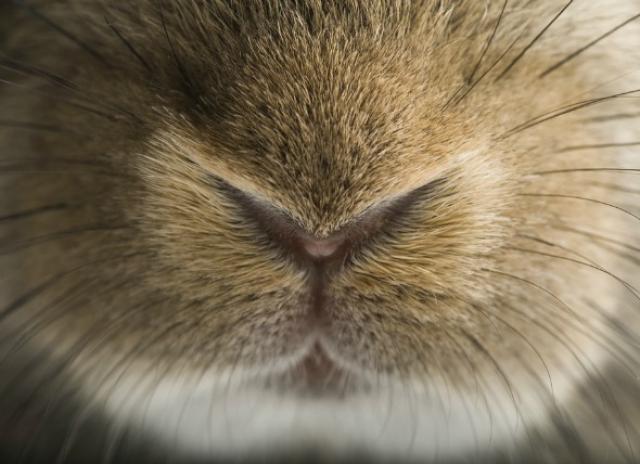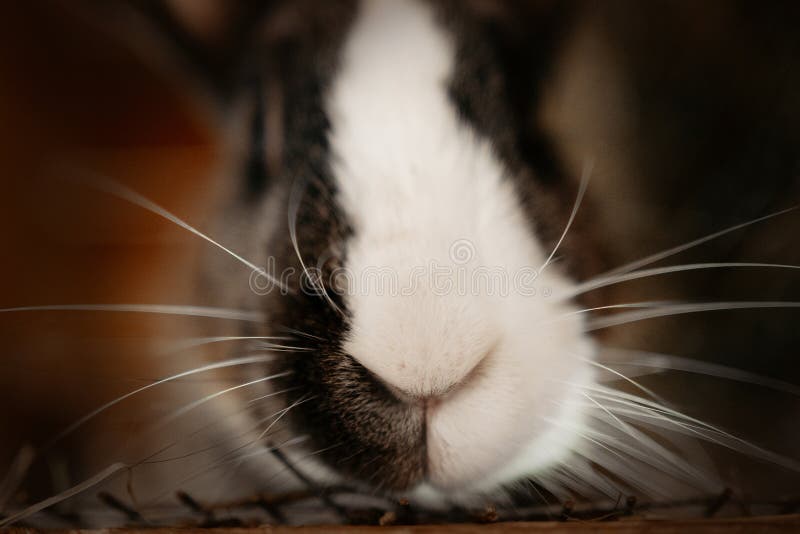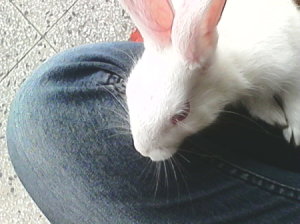

Lower Respiratory InfectionĪ rabbit with pneumonia may show symptoms such as loud, raspy breathing, and may point his nose high in the air and stretch his neck in an attempt to get more oxygen. Don’t stop the antibiotics early, and don’t put off treatment! A seemingly simple condition such as sneezing could develop into a potentially life-threatening problem, such as pneumonia or a systemic infection. Removing the drug too soon will leave only these particularly hardy individuals to be the progenitors of the new population of bacteria in your rabbit’s sinuses, and these will be genetically better able to resist the antibiotics you have been using (i.e., the population has evolved resistance to the antibiotics). The reason for this? Even the most effective antibiotics might not kill some of the more resistant bacteria right away.
#RABBIT GOOPPY EYE AND NOSE AND SNEEZING FULL#
Follow your veterinarian’s instructions carefully, and be sure to complete the full course of antibiotics, even if the symptoms go away before the medicine is gone. Once your vet receives the results of the C & S test, s/he will be better able to prescribe the particular antibiotic (or combination of antibiotics) that should be safest and most effective for your rabbit’s infection.Īntibiotic therapy may need to be continued for several weeks, and it should always be continued for several days after symptoms have disappeared to ensure that as much of the bacterial population as possible has been killed. If your rabbit is sneezing and/or shows signs of nasal and/or ocular discharge, especially if such discharge is whitish and thickened, she needs to be seen by a veterinarian and have a sample of nasal discharge taken and sent to a laboratory for culture and sensitivity testing. This laboratory test is the only way to determine (1) the species of bacteria causing the infection and (2) which rabbit-safe antibiotics will be most effective at killing them. The best way is via a CULTURE AND SENSITIVITY test.

More recent information suggests that many different species of bacteria can cause “snuffles.” Some of the bacteria most commonly cultured from rabbit nasal discharge include Pseudomonas aeruginosa, Bordetella bronchiseptica, and Staphylococcus aureus, though there are many others.īecause bacterial species (and their different strains) have characteristic sensitivity and resistance to various antibiotics, it is worth your investment to allow your veterinarian to positively identify the pathogen (i.e., disease-causing agent) your bunny has. Until fairly recently, many veterinarians believed that “snuffles” was almost always caused by the bacterial pathogen Pasteurella multocida, commonly found in rabbits (though often without causing any problematic symptoms at all). “Snuffles” is is a non-specific, “catch-all” term used to describe such symptoms without naming the specific cause. The condition is commonly called “snuffles.” Unlike a human cold, which is caused by a virus, rabbit upper respiratory infections are caused by bacteria. Rabbits can suffer from infections of the upper respiratory tract (the sinuses and other parts of the tract that are not actually parts of the lungs), and this is usually manifested as runny nose, runny eyes and sneezing. The particular cause of this in your bunny may require a bit of detective work on the part of your rabbit-experienced veterinarian>, but the following information may help. If you have a cold, be sure to wash your hands before you pet your bunny, lest you inadvertently share your “germs” with the next person who pets the bunny!)Īs many people are all too aware, however, rabbits can suffer from sneezing, runny nose, and runny eyes.


(Note that rabbits can serve as vectors for such viruses. Did he catch a cold from me?” Fortunately, your bunny cannot contract a human cold, as the viruses that cause such misery in humans are not contagious to rabbits. One of the most frequent questions I am asked via the House Rabbit Society’s online Rabbit Health link is, “My rabbit’s nose and eyes are running.


 0 kommentar(er)
0 kommentar(er)
